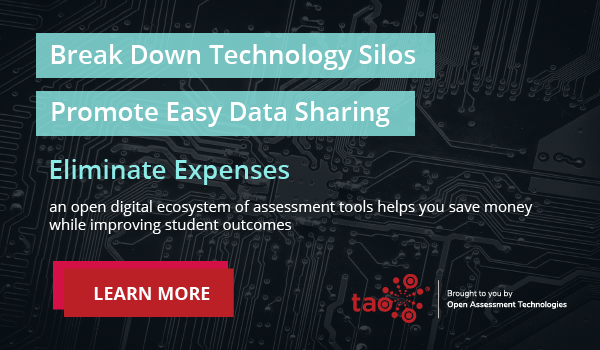Testing and assessment give educators valuable insight into what students know and have learned over a period of time. Today, high-stakes standardized assessments have gone increasingly digital. While traditionally given on paper with students bubbling in the correct answers to multiple-choice questions, high-stakes testing now allows for many different types of questions and responses. With digital testing, test makers have more standardized assessment tools available and there is more flexibility in testing, all with a faster turnaround time for scoring.
For educators, preparing students for digital high-stakes testing involves keeping up with the latest trends and transformations happening in digital testing. By preparing students for testing, educators can ensure they get the best data on what students know, avoiding issues around test validity.
High-stakes, Standardized Assessment is Becoming More Personalized
The overall changes in high-stakes testing all point toward a more customized and personalized assessment that meets students where they are and accurately assesses skills and abilities. Online standardized assessment tools give educators real-time feedback on students and allow educators to make changes to instruction quickly to improve student learning outcomes.
As assessments become more personalized, more groups of students may be assessed with better accuracy in different contents. Rather than having a one size fits all test, testing can be tailored to the students. Some of the ways that high-stakes testing is becoming more personalized include:
Adaptive Assessment
Adaptive assessment is an assessment that changes based on how a student is responding. While not easily implemented in traditional pencil and paper testing, adaptive assessment can be seamlessly incorporated through digital assessment technology. This could mean having different test items shown to different students depending on previous answers or allowing the student to participate in a real-world simulation where they have a wide array of answers or responses available.
One of the main benefits of adaptive assessment is that it gives educators a more accurate look into what students can do. This is because the technology can adjust the test based on the responses that a student gives. So, if a student is performing well, questions may advance in difficulty, whereas if they are struggling, the questions may decrease in difficulty. The important thing is that students get assessed on a much larger range of skills and abilities which could potentially lead to less frustration and a more accurate picture of the student’s ability. This is in stark contrast to traditional testing where each student takes the exact same test.
Tech Accessibility and Inclusive Learning Tools
Technology and standardized assessment tools have increased accessibility and inclusivity for students through universal design principles such as:
- Multiple opportunities for learning
- Personalized learning
- Choice in how to receive content
These three principles provide students with an opportunity to interact with assessments in different ways. For example, some students may need to use keyboard controls to navigate through an assessment and make use of other other accommodation tools like screen readers and oral dictation tools. There are several different options for how students can show what they know and assessments based on universal design principles give students different ways to express their thinking.
In addition to providing different methods for expressing thought, universal design also dictates that students learn in a variety of ways and they may need to have multiple opportunities to gain knowledge through reading, video, audio, action-based learning, and others.
All of this would be difficult to implement using traditional testing, however, the digital learning environment makes it easier. Test creators can develop content designed to match the needs of many students without having to dramatically change the testing format.
Centralized Data Access
One of the main challenges around typical high-stakes testing is that the data takes too long to get back to educators and aspects like raw scores rarely tell the full story of what a student knows. A testing platform that houses data centrally throughout the assessment cycle enables educators to pull useful reports with student data and metadata sorted on demand. Through assessment platforms like Open Assessment Technologies and TAO, testing is just the beginning, once educators have the data they can analyze and utilize the data to improve outcomes for students.
Managing this data can be challenging, this is why your management system needs to work interoperably with other testing products. By seamlessly integrating multiple systems and software, educators or test creators can design assessments that are highly customized and get at the heart of the content that they are assessing.
The Bottom Line
As high-stakes standardized testing has moved to an online environment to a few key transformations have developed along the way:
- Adaptive assessment
- Inclusivity in digital standardized assessment tools
- Centralized data and interoperability
Through standardized testing platforms and management systems like TAO, educators and test creators have flexibility in developing assessments to meet the needs of all students.
To learn more about how Open Assessment Technologies and TAO can improve your high-stakes test creation and exam delivery, click here.


